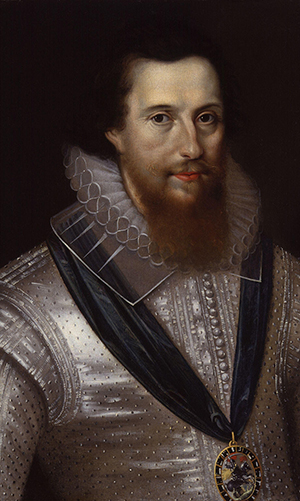
Essex’s son is much better-known than his father. Robert joined the Elizabethan court in the mid-1580s and quickly cemented his position as a favourite of Queen Elizabeth’s. Following the death of his stepfather, Robert Dudley, first earl of Leicester, in 1588 Essex gradually ascended to become the leader of England’s war effort in the First Anglo-Spanish War (1585–1604). For a time spectacular successes were achieved, most notably in Essex’s capture of the Spanish port city of Cádiz in 1596. Bad times were to follow, though. Essex increasingly found himself losing a factional battle with the Cecils at court for control of the Elizabethan state. In 1599 he travelled to Ireland as viceroy to crush the rebellion of Hugh O’Neill, second earl of Tyrone. Within months, however, he had negotiated a secret truce with Tyrone and returned to England without royal permission. Ostracised from court for his actions, Essex subsequently attempted a coup in the spring of 1601. Remarkably, the latter action was partly owing to his rapidly deteriorating financial situation, Essex having been encumbered throughout his entire life with the residual debts incurred by his father’s misadventures in Ireland. Quickly foiled in his rebellion, he was tried, found guilty of treason and executed on Tower Green in late February 1601. The similarities between the first and second earls are striking. Both were favourites of Queen Elizabeth, both displayed a striking impetuosity and both had the closing years of their lives significantly defined by Ireland.
